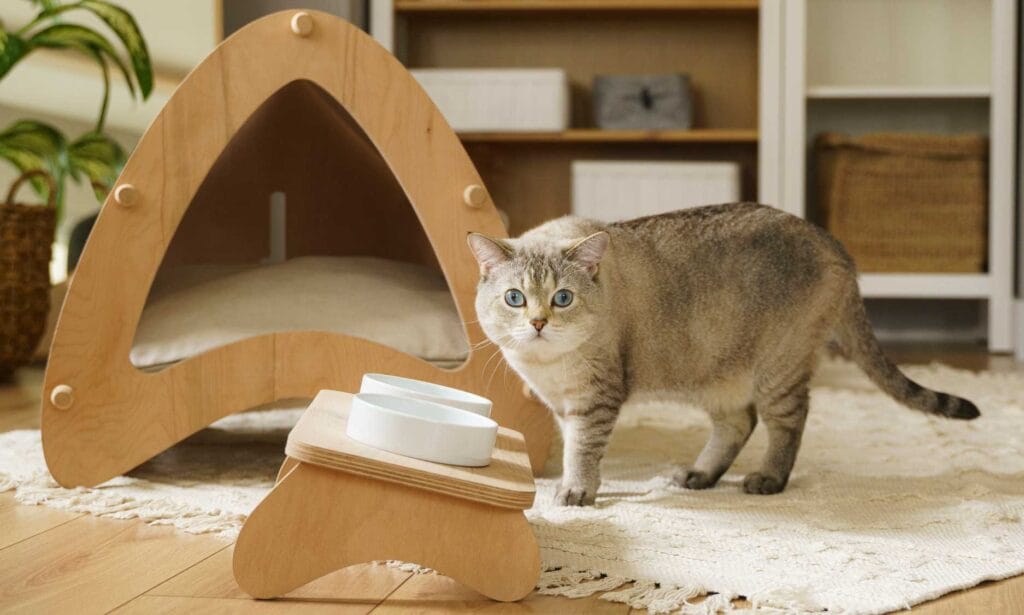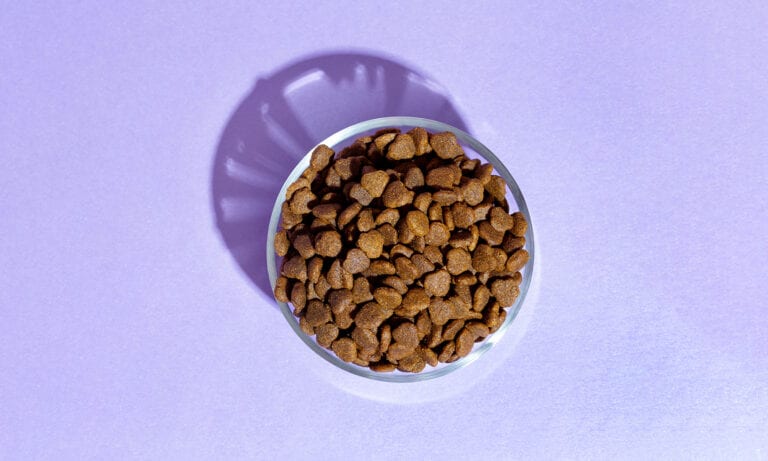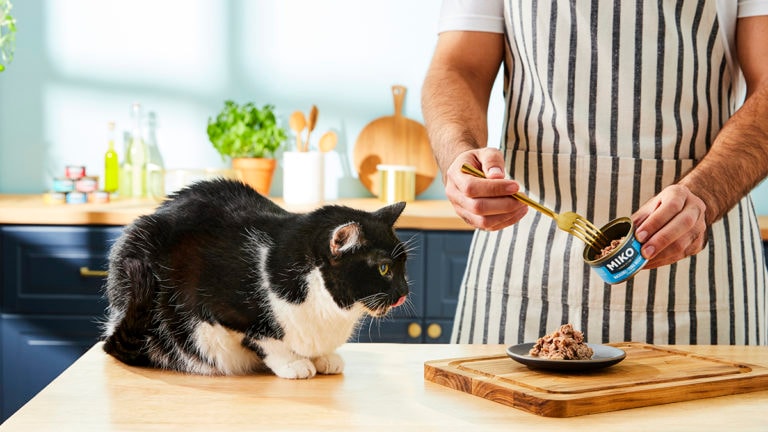Most experts agree that indoor and outdoor cats have exactly the same nutritional requirements—it’s just that indoor cats may need to get their nutrition in different ways because of lower activity levels.
Typically, indoor and outdoor cats can eat the same diet, but the indoor cat might gain more weight because they're not as active. That’s one of the main reasons why, if your cats are indoor pets, you might want to consider changing their food to an indoor cat formula. We speak to vet experts on the difference between indoor and outdoor cat food and if you should buy indoor formulas for your own feline friend.
What's the Difference Between Indoor Cat Food And Regular Cat Food?
The big difference between indoor cat food and standard cat food is that the indoor food usually has fewer calories per serving, says Dr. John Knox Mayfield, III, DVM, a veterinarian at Animal Medical Center in Hattiesburg, Mississippi.
"That may be beneficial if the cat is very sedentary and does not have an active indoor lifestyle," he says. "There are other reduced-calorie cat foods that are almost identical to the 'indoor' foods, but they are labeled as a 'light' cat food. Either of these could be beneficial to cats needing a lower caloric diet."
In addition to being more sedentary, indoor-only cats tend to get more hairballs. The lifestyle of an indoor cat, sheltered from temperature variations and changes in day length, often disrupts the natural seasonal cycle of fur growth, causing shedding almost continuously and aggravating the problem of hair swallowed during grooming.
While the specific formulations of indoor and regular cat foods will vary by manufacturer, most indoor formulas are designed to help less active indoor cats maintain a healthy body weight and reduce hairball formation, says Dr. Angela Witzel Rollins, DVM, PhD, DACVIM (Nutrition), clinical associate professor of nutrition at the University of Tennessee.
“Generally, they are higher in fiber to help move hairballs through the gastrointestinal tract,” she says. “The higher fiber also helps lower the number of calories per cup. Indoor formulas may also have a nutrient profile designed for slightly lower calorie intake.”
Should You Buy Indoor Formulas?
If you have an indoor-only cat who is not very active, switching them to an indoor formula might be a good idea.
As discussed, indoor formulas tend to have less calories, which can help your cat maintain a healthy body weight. However, Dr. Witzel shares, depending on your cat’s individual energy needs, an indoor formula may not be appropriate for weight loss.
Additionally, indoor cats tend to spend more time grooming, which can increase the risk of forming hairballs. Indoor formulas can help reduce hairball formation—like Hill's Science Diet Hairball Control cat food—and that’s another reason to provide this food to your cat. However, the hairballs could be due to a medical condition, in which case, you’d want to see a vet.
“If your cat expels frequent hairballs, you should also consult with your veterinarian to make sure vomiting isn’t due to other medical conditions,” Dr. Witzel says. “Before purchasing, also consider that indoor formulas may not be effective for preventing hairballs in all cats.”
There are no known nutritional differences and there are no specific nutrient profiles recognized or proposed by the Association of American Feed Control Officials. There is actually no such designation from a legal or nutritional standpoint other than foods for indoor cats are similar to those for less active cats in that they tend to be lower in fat and less calorically dense to help prevent obesity.
Indoor formulas have been on the market for a while now and some also claim to reduce fecal volume and odor. Generally, there are valid nutritional concepts that are included in the formulation of these diets. However, indoor formulas may not be right for every indoor cat, and it is best to discuss your cat’s nutritional needs with your veterinarian.
Remember, it is more about whether the diet is appropriate for the individual cat and in feeding to maintenance needs—regardless of diet.
Next, learn how—and what—to feed your cat during every stage of life.
More about cat food:
Share:












